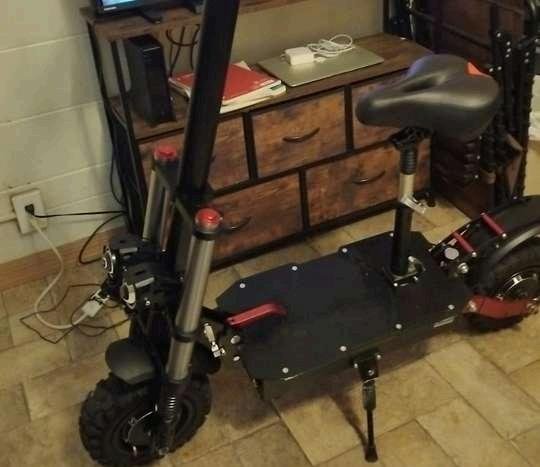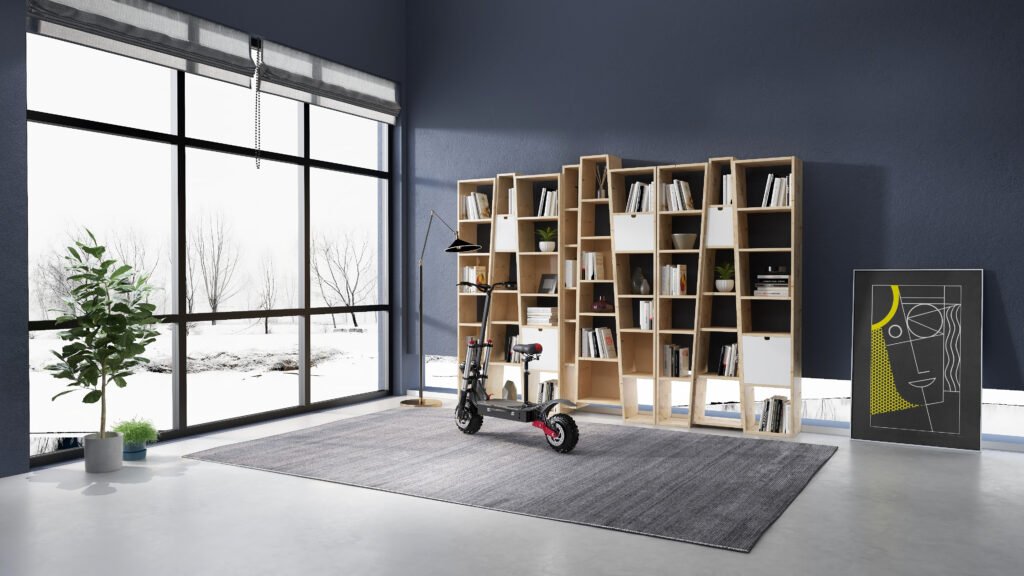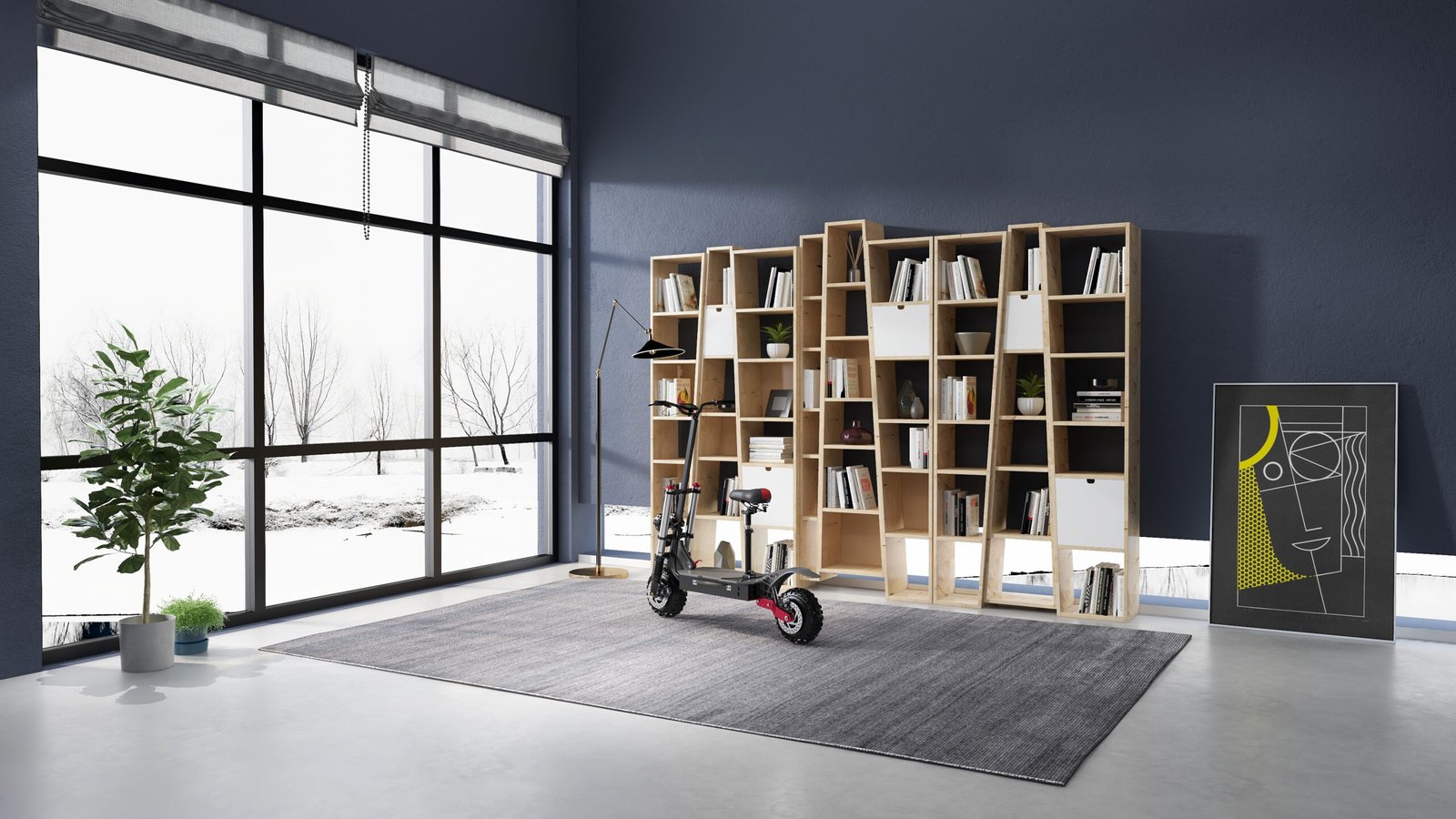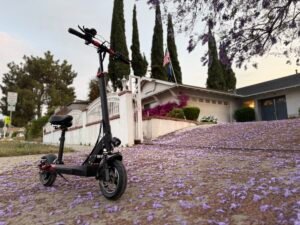How to store your electric scooter properly?
If you’ve just bought an electric scooter, don’t overlook where you store it. Even the highest-quality scooters can wear down quickly when stored the wrong way.
The best way to store your electric scooter is in a clean, dry space with stable temperature and no direct sunlight. Garages, storage rooms, and indoor corners are all great options—as long as they're not too humid or dusty.

We all focus a lot on battery life and motor power. But storage is just as important. Where you put your scooter every day affects how long it lasts, how well it rides, and how often it needs repair. If you get this part right, you’ll avoid a lot of unnecessary costs and headaches.
Where to store your electric scooter?
Buying an electric scooter is exciting—but figuring out where to keep it afterward? Not so much. Most people just leave it where it’s convenient, without thinking twice.
Store your electric scooter in a dry, indoor area that avoids direct sunlight1, extreme cold, or humidity. A garage, storage room, or hallway works great—just avoid balconies or outdoor areas with fluctuating weather.

Why indoor storage matters
Let’s break this down. Electric scooters contain batteries, motors, and a whole range of electronics that don’t handle moisture or heat very well. I’ve seen customers leave scooters out on a sunny patio or a wet balcony, and within a month the metal parts begin to rust and battery performance drops.
Here’s a quick comparison:
| Storage Type | Pros | Cons |
|---|---|---|
| Indoors (hallway, room) | Stable temperature, dry, dust-free | Takes up living space |
| Garage | Accessible, out of the way | Must be dry and not too hot |
| Basement | Cool, out of sunlight | Must be moisture-controlled |
| Balcony/Outdoor | Convenient for space | High exposure to sun, rain, dust, rust |
So, always pick function over convenience. Choose a place where temperature and humidity stay steady. Avoid areas that get damp, dusty, or overly warm. These environments will wear down even the toughest scooters.
How should I store my electric scooter?
After a long ride, most riders just roll their scooter inside and leave it wherever it lands. But there’s a better way.
Before storing, clean off any water or dirt. Make sure the scooter is dry. Fold it if needed. Keep it upright or use a wall mount2 to avoid bending or stressing the frame. Don’t store it with a low battery.

A quick storage checklist
I always recommend this checklist to my customers when they ask how to store their scooters properly:
✅ Step-by-step guide:
-
Wipe the scooter clean
Dirt and water left on the scooter can cause rust and mold. Use a dry cloth to wipe it down after each ride. -
Let it dry
If you rode in the rain, let the scooter fully dry before storing it. -
Check the battery level
Store it at around 50–80% battery. Don't leave it completely charged or fully drained for long periods. -
Use a stand or wall hook
Avoid placing it in a way that stresses the handlebar or wheel alignment. -
Cover if needed
If you store it in a garage or basement, consider using a dust cover or cloth to block dust buildup.
These simple steps can save you from costly repairs and keep your ride in top shape for years.
Is it okay to store an electric scooter in the garage?
A lot of people wonder if the garage is a safe bet. It seems practical—but there are conditions.
Yes, you can store your electric scooter in the garage, as long as it’s dry, dust-free, and doesn’t get too hot or cold. Avoid garages that flood, collect dust, or get strong sunlight through windows.
How to make your garage scooter-friendly
I live in Santa Ana, and garages here can heat up pretty badly in the summer. One of my customers once kept his scooter near a garage window where the afternoon sun poured in. The plastic panels faded, and the battery started acting up after just two months.
Here’s how to do it better:
| Garage Factor | Good Practice | What to Avoid |
|---|---|---|
| Temperature | Insulate the garage if needed | Avoid direct heat or freezing temps |
| Sunlight | Use window covers or a curtain | Sunlight hitting the scooter directly |
| Moisture | Use a dehumidifier or absorbent packs | Avoid wet floors or leaks |
| Dust | Use a cover or seal garage doors | Don’t park near a woodworking area |
If you fix just a few of these problems, your garage becomes one of the best long-term places to store a scooter.
Where is the best place to store electric scooters?
There’s no one perfect answer. But there are a few “best” spots depending on your home.
The best place to store an electric scooter is in a clean, covered indoor area where you can access it easily—like a hallway corner, storage closet, or shaded garage.

How I recommend the best spot to my customers
Whenever I help new customers choose storage for their JUESHUAI scooters, I ask them two questions:
- Do you need to access it every day?
- Do you want to avoid lifting or folding it often?
Based on that, here are my top picks:
| Location | Best For | Notes |
|---|---|---|
| Front door area | Daily commuters | Just wipe the floor regularly |
| Bedroom corner | Studio apartment users | Needs to be clean and dry |
| Indoor closet | Long-term storage | Make sure there’s airflow |
| Garage with cover | Homeowners with space | Insulate and avoid sunlight exposure |
| Basement with control | Quiet, out-of-the-way storage | Use moisture control and raised racks |
Think of it like this: If you’d be okay leaving your phone in that spot for a week, it’s probably safe for your scooter too.
Conclusion
The right storage spot protects your scooter’s battery3, frame, and electronics from damage. Keep it clean, dry, and out of direct sunlight—and it will serve you well for years.
Table of Contain
-
Understand the impact of direct sunlight on various materials and why it's crucial to avoid it for preservation. ↩
-
Storing your scooter correctly prevents frame bending and prolongs its lifespan, ensuring it stays in top shape. ↩
-
Learn effective strategies to safeguard your scooter's battery, ensuring optimal performance and longevity. This link offers valuable insights. ↩






